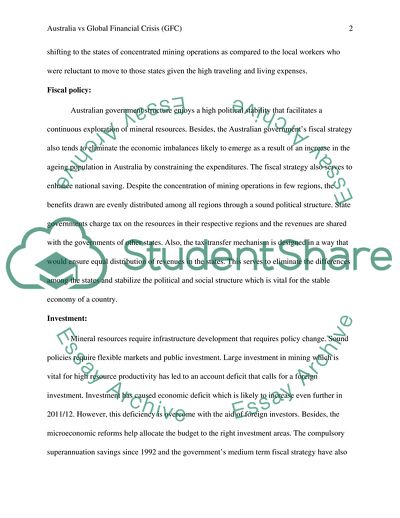Why Australia Survived the Global Economic Recession Assignment. https://studentshare.org/macro-microeconomics/1738592-australia-survived-the-gfc-exceptionally-well-discuss-the-possible-explanations-for-that-phenomenon
Why Australia Survived the Global Economic Recession Assignment. https://studentshare.org/macro-microeconomics/1738592-australia-survived-the-gfc-exceptionally-well-discuss-the-possible-explanations-for-that-phenomenon.


